The dramatically styled new Alpine Alpenglow concept serves to preview the French sporting brand's upcoming road and race cars - and showcases a potential means of safeguarding the future of the combustion engine.
Inspired by the firm's involvement in top-flight motorsport – Formula 1 and the World Endurance Championship most notably – the single-seat Alpenglow is, the firm says, "the starting point for all future Alpine car designs, technologies and breakthroughs".
It is obviously a track-focused proposition, conceived first and foremost to embody "the spirit of competition" that underpins all Alpine models, new and old. "This is what motorsports needs to look like tomorrow," the brand says, calling attention not just to its outlandish form but also its means of propulsion.
The Alpenglow, like the similarly conceived Alpine A4810 concept designed by students at Turin's Istituto Europeo di Design earlier this year, is fuelled by hydrogen - only this time the brand has categorically confirmed it uses an electrically assisted internal combustion engine, rather than a fuel cell arrangement.
Alpine has given no technical details of this engine, nor suggested that this element of the concept in particular points to any future products in its portfolio, but says: "A hybrid hydrogen internal combustion engine is environmentally friendly and comes with the inimitable driving pleasure that this technology provides, including the sheer might, weightlessness and enthralling soundscape."

Similar attributes of a gas-burning engine – namely its soundtrack and power delivery – have been cited by Toyota, whose own efforts to refine hydrogen combustion technology for the eventual purposes of series production have also leaned heavily on its motorsport activities.
Also, Alpine notes, the motor "releases practically nothing but steam", and so presents an intriguing vision of how sports cars, both for track and road, could continue to use combustion power in the years to come, while essentially running carbon-neutral - if using 'green' hydrogen, the refinement of which produces no CO2.
Autocar recently reported that Alpine was "very actively" exploring the use of hydrogen as a means of safeguarding combustion technology. CEO Laurent Rossi told us: "It’s only normal we look at parallel paths - and I say parallel on purpose; the idea is we want to find alternatives that are not necessarily incompatible with electrification, because electrification is – whether we like it or not – the future of automotive for at least 60-70% of the automotive parc.
“For the rest, it will depend on the type of usage, the characteristics, the features you want to have - I’m thinking LCVs with a high payload and fixed trips could afford to use different solutions, or high-output cars."
So far, Alpine has only confirmed plans for three upcoming road cars – a hot hatch based on the 2024 Renault 5, a rakish crossover called the GT-X Over and a follow-up to its flagship Alpine A110 – all using Renault's battery-electric platforms and due by 2027.

But Rossi said: "Hydrogen has the green merit of being very compatible with electrification, because the parallel path to hydrogen as a fuel is hydrogen as a fuel cell, which produces electricity.
"That’s good because the end-to-end industrial path for hydrogen will be compatible with electrification, so we believe that could be one way forward."
He went so far as to hint that Alpine could showcase its hydrogen-combustion vision with a bespoke, track-focused prototype. It is now clear he was referring to the Alpenglow.
Notably, Alpine says this concept is "as lightweight as the rest of the brand's cars", suggesting that even with its two 700-bar cylindrical hydrogen storage tanks running either side of the driver, it weighs in the region of 1000-1200kg – around the same as the A110. Extensive use of recycled carbonfibre in its construction will have played a large role in keeping weight down, and will do too on future cars.
More concrete suggestions of what to expect from future Alpine models come in the form of the concept's defining design cues. Its dramatic front light bar and vertical stacked tail-lights, for example, will adorn its future production cars, and so will a variation of the Alpenglow's LMP1-inspired steering wheel.
Likewise the prevailing focus on aerodynamic efficiency – already confirmed to be a defining tenet of Alpine's future design language – which here is manifested in a sharp, V-shaped front end, huge air channels down the side, a roofline that sits just one metre off the ground and an active, lightweight rear wing, in this instance completely transparent.

Alpine has confirmed that its upcoming LMDh racing prototype will take heavy design inspiration from the Alpenglow.
Revealing the concept, Rossi said: "Alpenglow’s mighty and lavish design hints at what Alpine cars will be like tomorrow and at our vision for motorsports moving forward.
"With hydrogen technology on board, we are strengthening our pledge to bring about a future where emissions are clean and driving pleasure is as real as ever."
It will make its public debut at the Paris motor show next week, alongside a similarly future-looking 'Manifesto' concept from sibling marque Dacia, and parent brand Renault's new 4 electric crossover.







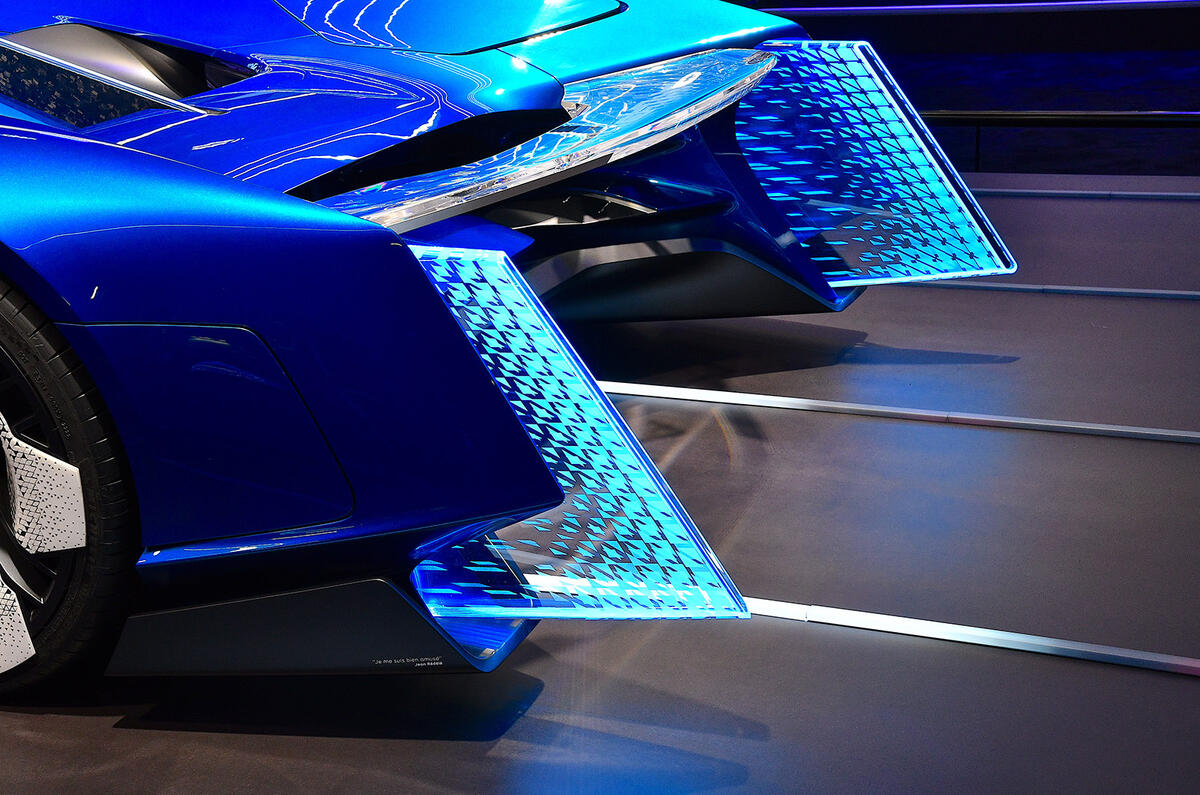




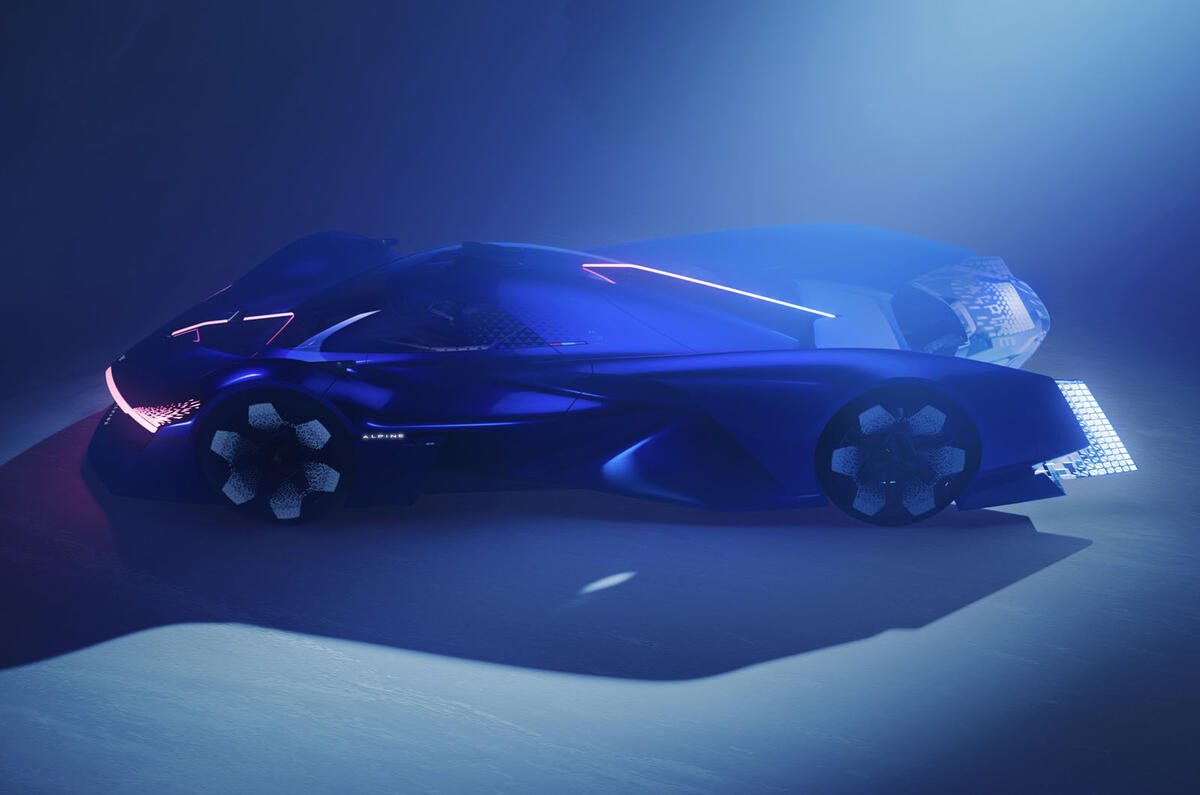

















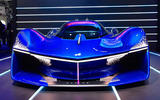

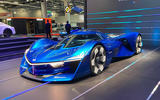








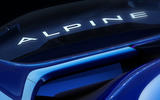













Join the debate
Add your comment
And how do they get hydrogen in a commercial scale?
Cracking fossil fuels.
#greenwashing
FFI Green Hydrogen, for just one example.
Idiot.
If you are going to use hydrogen, it's way better to use it in a fuel cell rather than a combustion engine. The fuel cell is twice as efficient and free of NOx emissions. The only 'advantage' of a combustion engine is that it creates noise and vibration and requires less investment.
I look forward to the next chapter!